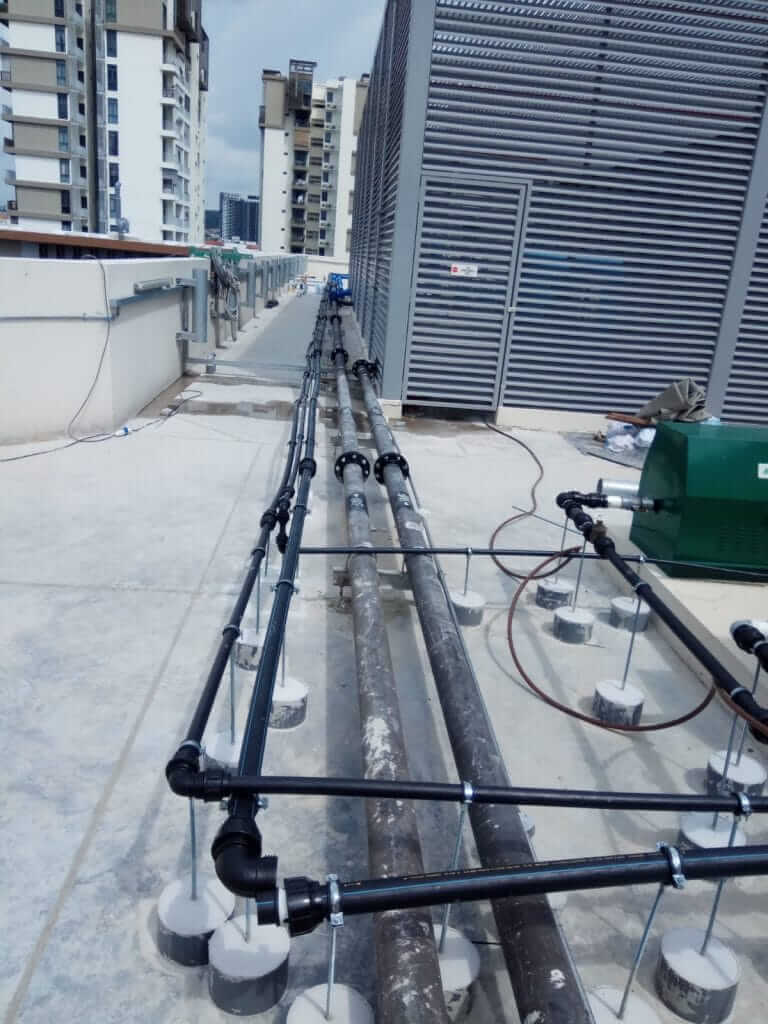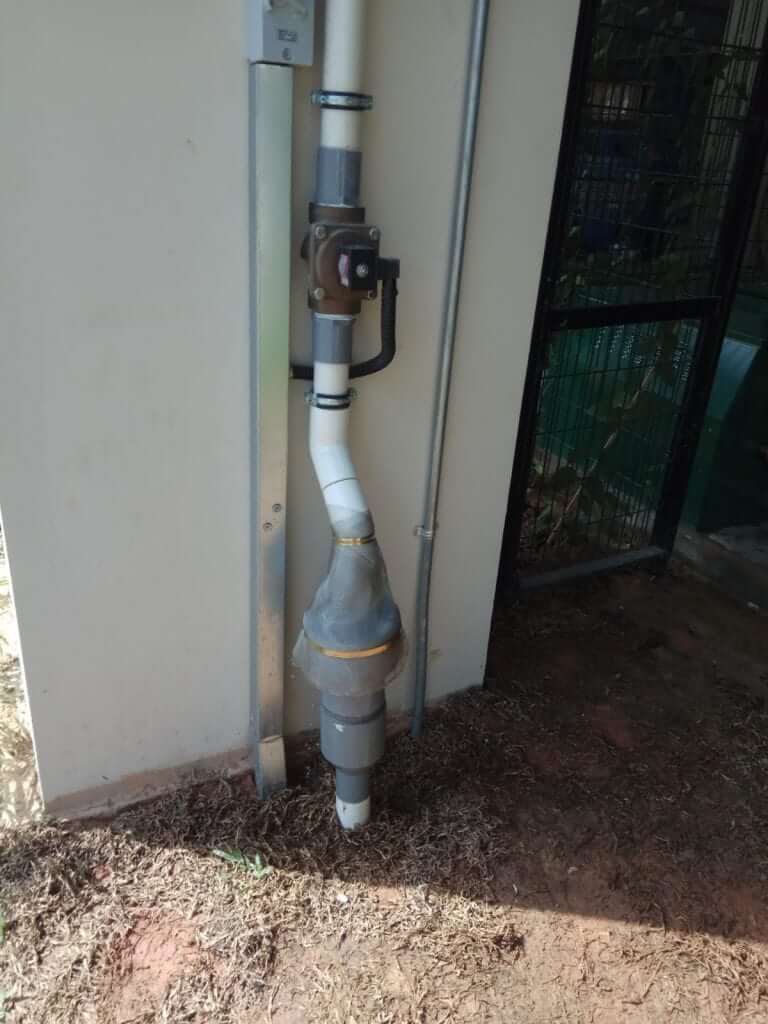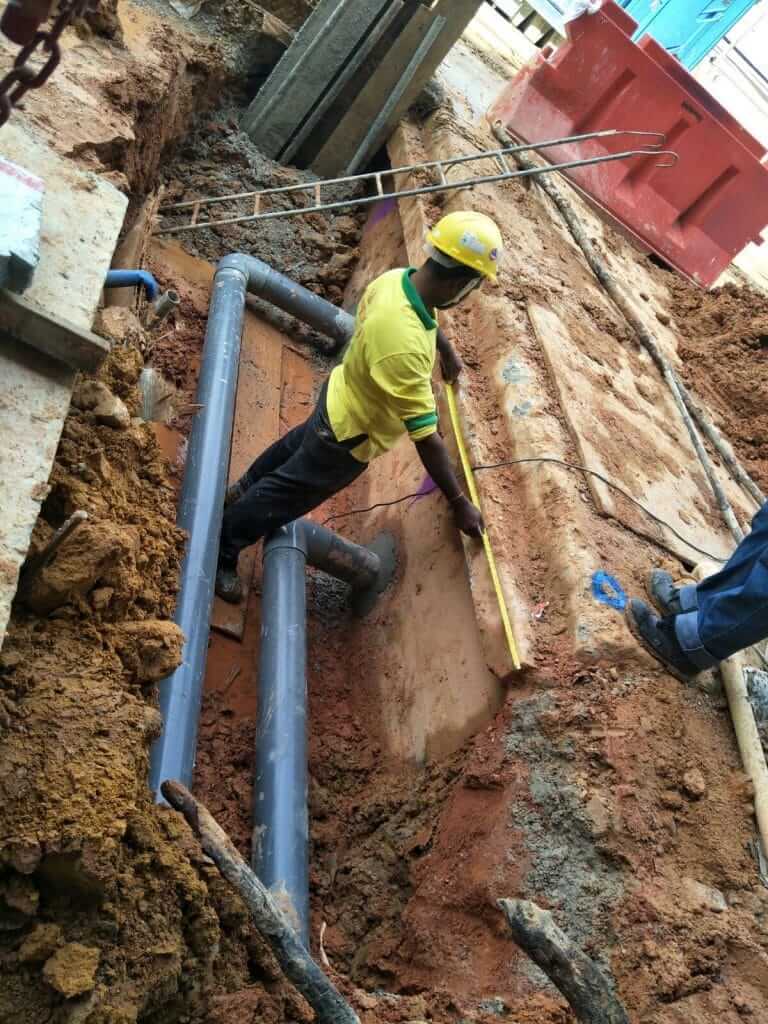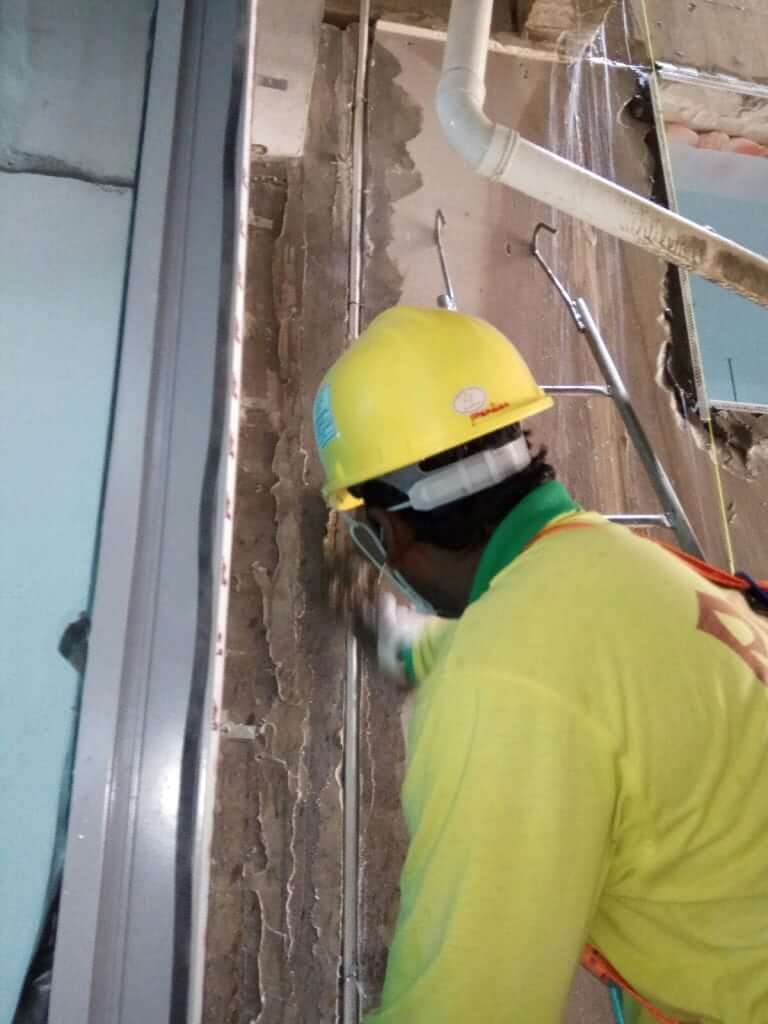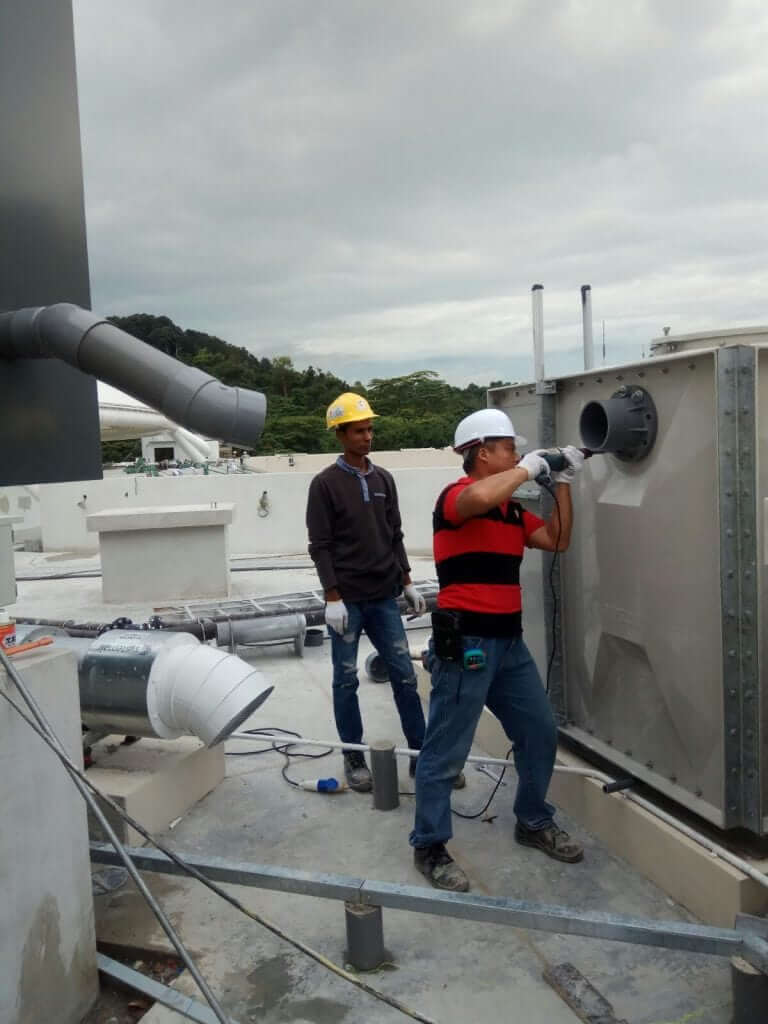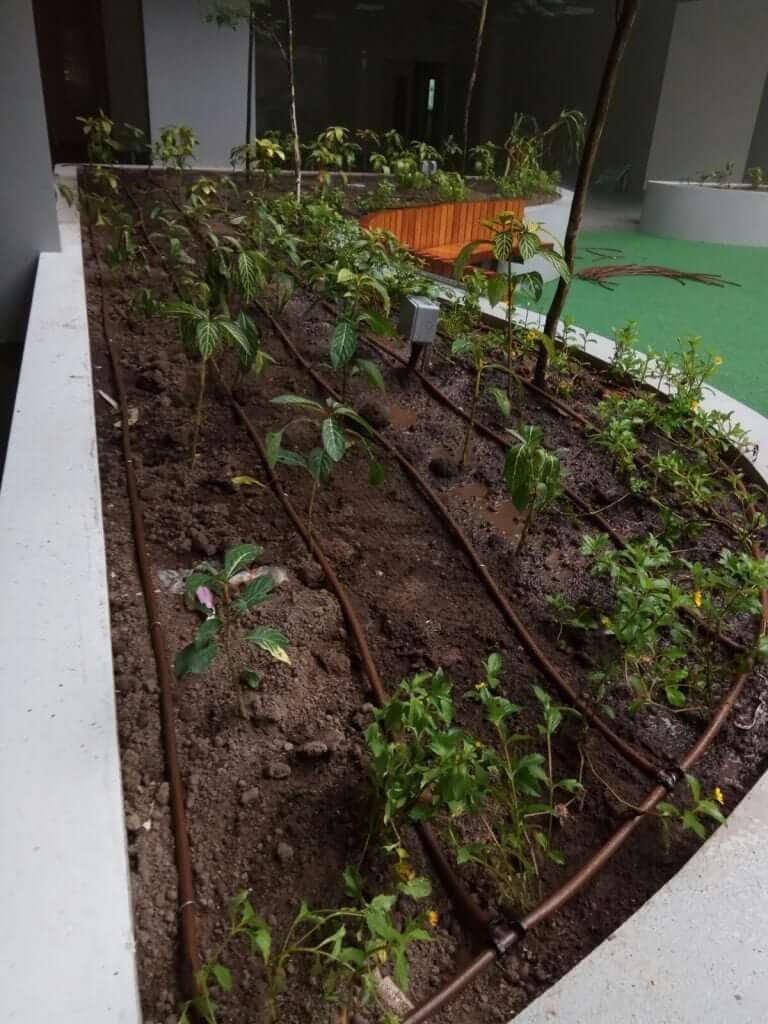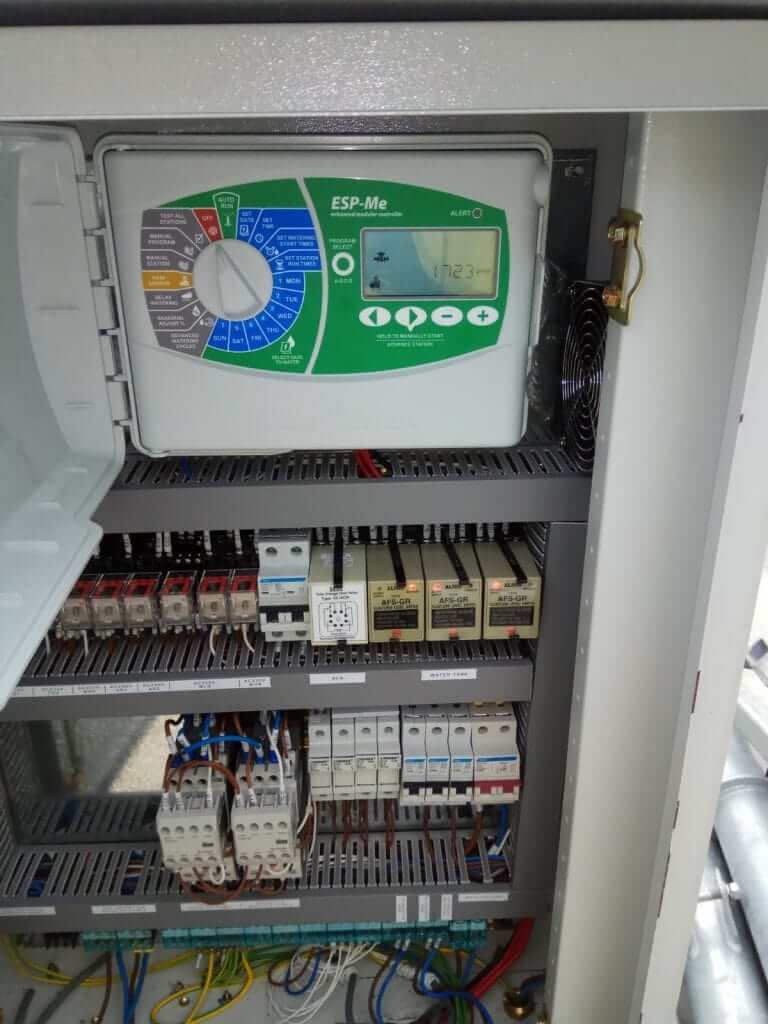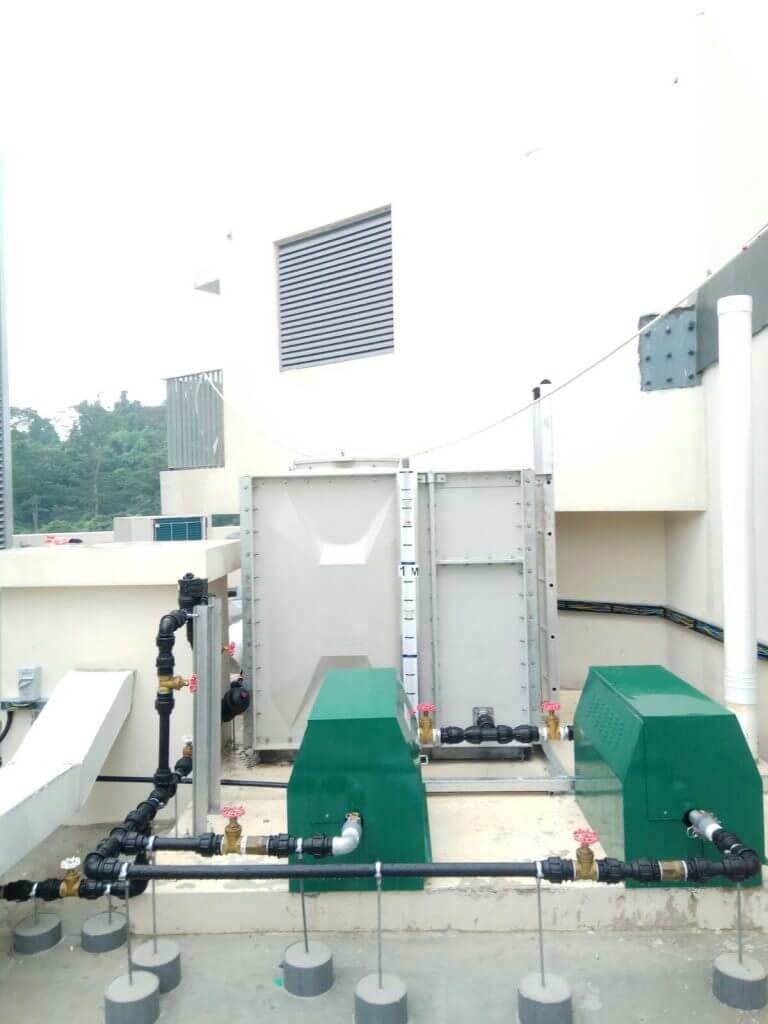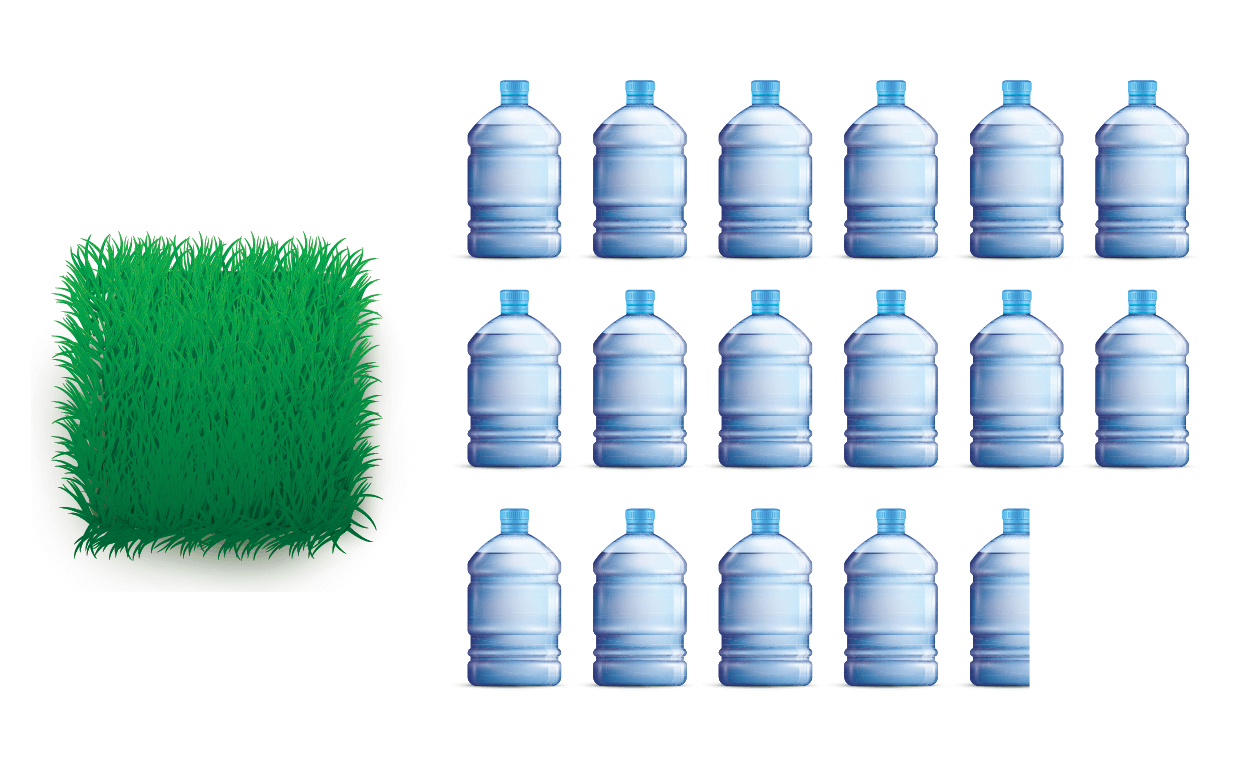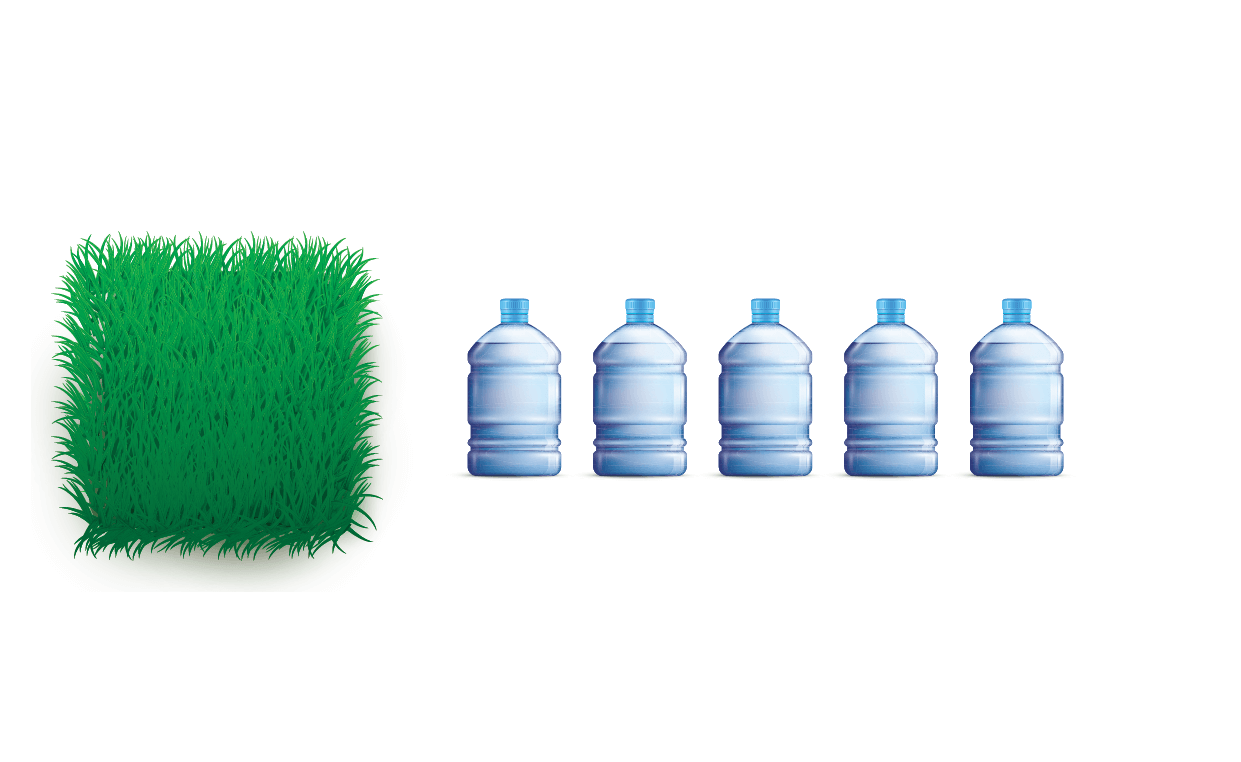Many environmental-conscious countries have started to limit water usage for a sustainable future.
Here at Prince’s, we understand the importance of conserving water. That is why our irrigation systems are designed to be water-efficient, minimising water consumption while delivering optimal results.
With a strong background in plants and landscape maintenance, we can provide professional input and practices for irrigation based on your specific situations.
Or irrigation systems can be:
- Manual
For manual watering, we can provide irrigation advice on the quantity, frequency, and method for a specific site and plant conditions.
- Semi-automatic or fully automatic
For semi-automatic and automatic irrigation, we design and install different irrigation systems including drip and sprinkler systems.
We also provide advice on fertigation and chemigation for your landscaping needs. Fertigation is an automatic system to apply liquid fertilizer while chemigation is an automatic system to apply liquid insecticide and fungicide.
We can assure that our projects and service are of the best quality.
Together with our clients and partners, we can work together for a sustainable and bright future.
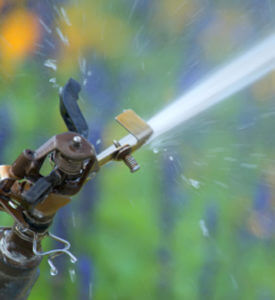
OUR SERVICES
Irrigation System Consultation
Our team of irrigation specialists can provide professional consultation to address any of your clients’ needs. With proper advice from our team, you can rest assured knowing that you have an irrigation system that best suits your requirements.
Irrigation System Installation
Our team undergoes rigorous training and development to keep up with the current trends and technologies in irrigation systems.
Equipped with diverse experiences from a wide variety of projects, the performance and professionalism of our team may be assured.
Irrigation System Design
Our team of qualified designers may assist in developing an efficient and sustainable irrigation system, may it be in corporate offices, commercial, private and public areas, or homes.
Irrigation System Maintenance
We provide technical support, hardware/software repair, and regular maintenance which can be scheduled monthly or quarterly to ensure that the system is in its optimum functionality, performance and efficiency.
Here’s a sample of our Irrigation Maintenance Report.
Irrigation System Rental
Apart from the services above, we also offer high-quality irrigation rental services.
With the use of a quick coupling system, an easy ad-hoc drip irrigation system can be installed onto any existing landscape.
With the use of a quick coupling system, an easy ad-hoc drip irrigation system can be installed onto any existing landscape.
To water the landscape, a simple hose of sufficient length can be used to connect the system to nearby tap.
Once work is done, the hose can be removed and kept elsewhere, keeping the entire watering process neat and tidy.
The irrigation system can be on a rental basis and shall be dismantled and taken back once the contract period has been completed.
Maintenance includes flushing of laterals, checking drippers, replacement of emitters when necessary, fixing the leaks in the irrigation system, replacement of lateral LDPE fittings when there is crack or breakages in the fittings, timer lateral filter cleaning, and other irrigation items we have installed.
Water Budget
In Singapore, approximately 5 Litres of water is required for 1 m² shrubs planting area in one day due to the evapotranspiration rate and climatic condition.
- Manual watering by using Hose
Irrigation efficiency of Manual watering – 30%
(Due to infiltration rate, field capacity, soil type)
So, water requirement for 1 m² area per day = 5 Liters * 30% = 16.67 L/ m²/day
Manual Watering by using Hose
- Drip irrigation
Irrigation efficiency of drip irrigation – 100%
.
So, water requirement for one m² area per day = 5L * 100% = 5 L/ m²/day
Drip Irrigation
• Manual Watering Breakdown
For 4,727 m² area:
16.67L* 4,727m² = 78,705 L/ day = 78.8 m³/day
Average rainy days = 160 days in a year
So average irrigation days = 365-160 = 205 days
Total water usage per year= 78.8m³ x 205 days = 16,154 ?m³/ year
And need to consider 10 % wastage of water during irrigation
So total water usage per year = 17,769.4 m³/ year approx.
• Drip Irrigation Breakdown
Auto drip irrigation area 2,030 m² area:
(5L x 2030m²) = 10,150 L/ day 10,150L= 10.15 m³/day
Total water usage in a year = 10.15 x 365 = 3,704.75 m³/ year
Manual drip irrigation area 2,697 m²:
(5L* 2697m2) = 13,485 L/day = 13.48 m³/day
Total water usage in a year = 13.48 x 205 (no rainy day) = 2,763.4 m³/year
Total water usage of Drip irrigation system= 3,704.75+2,763.4 = 6,468 m³/ year aprox.
So, we save = 17,769.4 m³– 6,468 m³/ = 11,301.4 m³ per year by using drip irrigation.
• NEWater Savings
If use potable water for irrigation
The unit rate of potable water= S$2.74/m³ as per PUB
So can save, 11,301.4 m³ x S$2.74 = S$ 30,965.84?/ year
If using NEWater for irrigation
The unit rate of potable water= S$2.33/m³ as per PUB
11,301.4 m³ x S$2.33= $41,402.70/ year
So can save S$ 26,332.26/ year
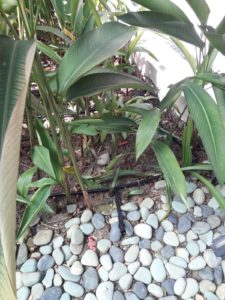
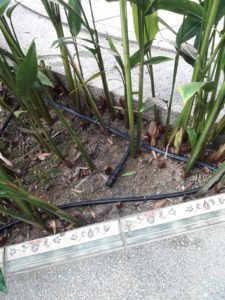
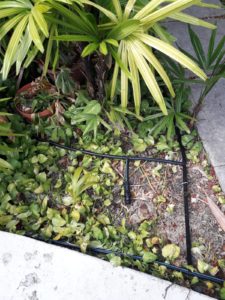
FAQs About Our Irrigation Systems In Singapore
What Is A Sprinkler System?
A Sprinkler system is a form of an irrigation system which is commonly found in golf courses and horse tracks. It is recommended for turf area.
Fundamentally, there are six major components of an automatic sprinkler system. They comprise of:
Water source:
– Tanks, ponds, water well, river
Irrigation pumping unit:
– A pumping unit will work as per the instruction of an irrigation controller. A pumping unit contains a water pump, pressure switch, water top-up mechanism, control panel
Irrigation controller:
– This will be the brain of the system which speaks to the control valves, telling them when and how long to supply water to the sprinklers. The sprinklers will then direct and control the water applied to the landscape automatically. The controller also provides a signal to the pumping unit for on and off. It can also work with various sensors like a rain sensor and a water sensor and It helps to save water automatically as per the plant requirement.
Water conveying pipes:
– uPVC or H.D.P.E. pipes are used for conveying water from source to sprinkler.
Solenoid valve:
– The purpose of a valve is to control a group of sprinklers which is called a watering station. According to how each plant species’ water requirements are and are arranged, the stations are generally laid out and installed. The species with most water requirements will be placed within the landscape and hence, allowing it to have a maximum amount of water supply. Each valve is tied to a numbered station within the controller, classifying it as Station 1, Station 2, Station 3 etc. The controller will operate the valves systematically. Which means, Station 1 will water thoroughly before Station 2 starts. This process is called the watering cycle. The controller can store memories which allows the system to operate automatically and precisely how long and how the stations will receive watering.
Sprinklers:
– Sprinklers are in various types — micro-sprinklers, impact sprinklers, rotors, pop up sprinklers and rain guns. Selection sprinkler selection will do as per the plant specious, planting patterns.
What Is A Drip System?
A drip system uses the scientific method of irrigation carrying desired water and nutrients directly to the root zone of the plant, drop by drop.
Drip irrigation is a type of micro-irrigation system that has the potential to save water and nutrients by allowing water to drip slowly to the roots of plants.
The goal is to place water directly into the root zone and minimise evaporation. Drip irrigation systems distribute water through a network of valves, pipes, tubing, and emitters.
It delivers water and nutrients directly to the plant’s roots, in the right amounts, at the right time, so each plant gets exactly what it needs, when it needs it, to grow optimally. Drip irrigation is known to be the most efficient irrigation methods, with 100% water use efficiency.
COMPONENTS OF A CENTRALISED AUTO DRIP IRRIGATION SYSTEM:
Water sources:
Tanks, ponds, water well, river
Irrigation pumping unit:
A pumping unit will work as per the instruction of an irrigation controller. A pumping unit contains a water pump, pressure switch, water top-up mechanism, and a control panel.
Irrigation controller:
This is the brain of the system which instructs the control valves when and how long to supply water to the drip lines. The drip lines will then direct and control the water applied to the landscape. The controller also provides a signal to pumping unit for on and off. The controller can work with various sensors like a rain sensor and a water sensor, and helps conserve water by limiting the amount of water used according to the individual plant requirements. It helps to save water automatically as per the plant requirement.
Water conveying pipes:
uPVC or H.D.P.E. pipes are used for conveying water from source to sprinkler
Solenoid valve:
The purpose of a valve is to control drip irrigation, which is called a watering station. According to how each plant species’ water requirements are and are arranged, the stations are generally laid out and installed. The species with most water requirements will be placed within the landscape and hence, allowing it to have a maximum amount of water supply. Each valve is tied to a numbered station within the controller, classifying it as Station 1, Station 2, Station 3 etc. The controller will operate the valves systematically. Which means, Station 1 will water thoroughly before Station 2 starts. This process is called the watering cycle. The controller can store memories which allows the system to operate automatically and precisely how long and how the stations will receive watering.
Drip lines:
Drip lines are mainly two types of online drip and inline drip, it allows water to deliver the land by drop by drop
COMPONENTS OF A DECENTRALISED AUTO DRIP IRRIGATION SYSTEM:
Water Tap Point
It is a water inlet inside/beside the landscape area. Expected water pressure is 2.5 bar. The minimum required is 2 bar for better performance.
Double Tap
Used to T.E.E. off the water flow into different purpose one connection is going to drip irrigation purpose. One point is used for connecting the hose for manual irrigation, floor cleaning etc.
Double Check Valve
A dual non-return valve that ensures there is no backflow of water from the drip system to water lines. It prevents water contamination in water lines.
Irrigation Controller:
(Power source: Alkaline battery)
This is the electronic device directly connected in the water point. We can set a daily/weekly watering schedule. Here, we can choose the watering days, time, duration in each programme. The device will deliver water to the drip lines as per the given programme and the controller valve is opened and closed by an electric pulse. The electric pulse will be generated as per set up in the programme.
Drip lines:
Drip lines are mainly two types of online drip, and inline drip, it allows water to deliver the land by drop by drop
How Much Does A Completed Irrigation System Cost?
The cost differs extensively depending on the brands of the components you select. There are premium brands out in the market, and there are also economically affordable brands.
However, it is always best to seek advice from an irrigation specialist and let them give you some options to choose from.
The sole purpose of having the irrigation system is to be hands-free for your landscape. You should not assume that buying a premium brand will give you a longer-lasting irrigation system.
You may spend $500 for a simple tap timer controller, backflow to stop water from getting back to the water source, driplines, and drip-line accessories. You may spend $5,000 to have the irrigation system for a broader landscape.
It all depends on the size of the landscape, your budget and as well as how experienced your irrigation specialist is. Designing an irrigation system is very flexible, allowing you to select the components used based on your budget.
Is It Essential For A Landscape To Be Divided Into Different Zones?
Yes, different layouts of plants in the landscape have different watering requirements. For example, lawns, shrubs, hanging baskets and borders all require a different amount of water.
Also, the equipment that is being used to water these areas operates at various water pressures and applies water at several rates. Having separated zones will allow these areas to be watered most effectively and economically.
Zoning is necessary when there is a limited size of water source because there we can get enough time to refill the tank as per the requirement.
Will An Auto Irrigation System Use More Water Than Manual Watering?
No, the whole idea of an Auto Irrigation System is to offer dependability with watering which can be easily adjusted to deliver full benefit with minimum water consumption. Manual watering does not allow this.
Thus, for condominium estates, it is strongly recommended to switch to Auto Irrigation Systems. By using a drip line, we can save water up to 60-70% than Manual Watering.
How Will The Irrigation System Know When To Stop When It Rains?
It is advisable to get your irrigation controller connected to a rain sensor. There is a sponge-like material inside the rain sensor which absorbs rainwater when it rains, making it heavy. As the sponge absorbs more water, it will sink and activate a pressure pin below it, which will send an electrical pulse to the controller, telling it to stop watering. The rain sensor will then automatically reset when the sponge dries out.
I Would Like To Buy Some Irrigation Products And Do The Installation Myself. I Am Not Quite Sure What I Should Do. What Can I Do Next?
Not to worry, if you have already bought the equipment and you are unsure of what to do, simply call us! We will come down to your estate for a site visit, make some measurements and understand better from you on what you expect the outcome to be.
You will only have to provide us with a scale plan of your area. Upon our site study, we will give you a quotation for the installation and the maintenance of your system.
I Would Like To Have A Comprehensively Designed And Built Auto Irrigation System For My Projects/ Estate. What Should I Do Next?
The most important thing to do is to meet our irrigation specialist on-site for a site walk and for us to better understand the landscape area.
This is important because, on-site, our irrigation specialist will then be able to have a full picture of the areas which can or cannot be adjustable when preparing a proposal for you.
On-site, we will be able to help the client save a significant cost on other aspects of the projects such as the location to have power access, which method of running the irrigation pipes will help you save cost and even suggest you on the pump size to save cost.
Once the survey is complete, we will offer you the full layout plan of the system and requirements. Once we have finalised all documents and the decision is made to award the project to Prince’s, we will then take over from there and build the irrigation system on your behalf.
Can I Have Fertiliser Inside My Irrigation System So I Can Save On Landscape Maintenance?
Yes, you can.
For a comprehensive irrigation system where there are water pump and tanks involved, all you need is to get a fertigation system which has a liquid chemical fertiliser.
This liquid fertiliser will then be introduced into the irrigation water pipes and evenly distributed via sprinkler systems or drip systems. Thus, saving you a lot of money on landscape maintenance.
I Have Up And Down Landscape Gradients/ Hanging Baskets And Pots, And There Is An Existing Irrigation System That Supplies Water. The Pressure Fluctuates Severely. What Should I Do?
Simply purchase a pressure regulator which fits the drip system. Thus, preventing the uneven pressure fluctuation from happening. If unsure how to install, please give us a call, and we will gladly assist you with a minimum fee of installation.
How Much Maintenance Is Required For An Irrigation System?
If the installation is done right from the start, the maintenance will not cost you a lot. Realistically, the maintenance should be charged cheaper to clients and limited to regular visual inspections to detect any faulty irrigation components.
As technology has vastly improved throughout the years, irrigation systems and parts like controllers and vales are now highly reliable. However, materials such as driplines, sprinklers, pumps etc. will wear and tear over time. Thus, it is always advisable to contact us so that we can offer you a competitive package and maintain your system for years to come.
I Want To Get An Irrigation System, But I Do Not Have The Money To Do So. What Should I Do?
The first step is always deciding what you want or not. The next step is to call Prince’s up. Prince’s has developed a first-ever business model which helps such customers who are tight on cash. Irrigation as a Service (I.a.a.S), is a rental-based business model that will help any client save money.
Prince’s will invest 100% of the supply & installation cost for you. All you got to do is pay for its maintenance. It works just like a mobile subscription plan. The contract is valid for a minimum of three years, and the client has the option to choose how long they wish to subscribe.
If the client decides 5 years, the system belongs to the client 100%. You have the option to renew the maintenance contract with Prince and an even lower price as compared to the initial cost.
Do I Really Save Time When I Have An Irrigation System Installed?
Yes, of course.
Imagine having someone helping you to do watering once every morning before sunrise and once in the evening. You have the full flexibility to spend your valuable leisure time to water yourself. Even when you are travelling for a few days, the system will continue watering automatically.
Why Do I Need To Fork Out Excessive Money Just For The Irrigation System When Manual Watering Does The Job?
Yes, manual watering does the job. But it also adds on to your water utility bills. Manual watering is not a smart system as it has no controller telling it when to run or how much water pressure to apply. An irrigation system does all the work for you and helps you save money up to approximately 60% of water utility bills.
What Are The Advantages Of Having An Irrigation System?
• Fertilisers & Nutrient loss is minimised due to the system. *Minimise leaching*
• Water application efficiency is high if managed correctly. Field levelling is not necessary
• Field with irregular shapes is easily accommodated
• The system can operate directly from Tap point/ portable water & non-potablewater sources
• Moisture within the root zone can be maintained at field capacity
• Soil type plays a less important role in the frequency of irrigation
• Soil erosion & Soil salinity is lessened
• Weed growth is reduced
• Water distribution is highly uniform – controlled by the output of each nozzle
• Labour Cost is less than other irrigation methods
• Variation in supply can be regulated by regulating the vales & drippers
• Fertigation can easily be included with minimal waste of fertilisers
• Foliage remains dry, reducing the risk of disease
• Usually operates at a lower pressure than other types of pressurised irrigation, reducing energy costs
What Are The Disadvantages Of Having An Irrigation System?
• Initial cost be more than overhead systems (manual labour)
• The sun can affect the tubes used for drip irrigation, shortening their usable life.
• If the water is not properly filtered and the equipment not properly maintained, it can result in clogging
• P.V.C. pipes often suffer from rodent damage, requiring replacement of the entire tube and increasing expenses.
What Is Irrigation As A Service? (I.A.A.S)?
I.a.a.S is a business model introduced by Prince’s. It is the first-ever customer-orientated service which caters to the client with tight cash to buy an irrigation system.
I.a.a.S is offered to clients on a rental service basis. Providing clients with a more feasible and affordable Irrigation maintenance solution if clients do not wish to pay for a lump sum.
Prince’s will invest 100% into the supply & installation of the system for you. You only must pay for its maintenance. I.a.a.S can cost you as low as $195/month! I.A.A.S. helps Clients by eliminating ALL SOR Rates/ Star Rates/ fluctuations of prices due to unstable economic crisis when it is required as I.A.A.S. factors all-in materials and services which will be required during the minimum three years contract package.
Upon completing a 5-year contract, the system belongs to the client 100%. You have the option to renew the maintenance contract with Prince’s and an even lower price as compared to the initial price.
Can Irrigation As A Service (I.A.A.S) Help Me Save Cost On Landscape Maintenance?
Yes, it can! Landscape maintenance is usually expensive because of the manpower required to do landscaping works and watering of plants.
If you have the option to install I.a.a.S and select Prince’s Landscape to do Landscape Maintenance for you, we can provide you with a competitive price. You will not need to worry about the landscape anymore as we will take care of it from head to toe.



